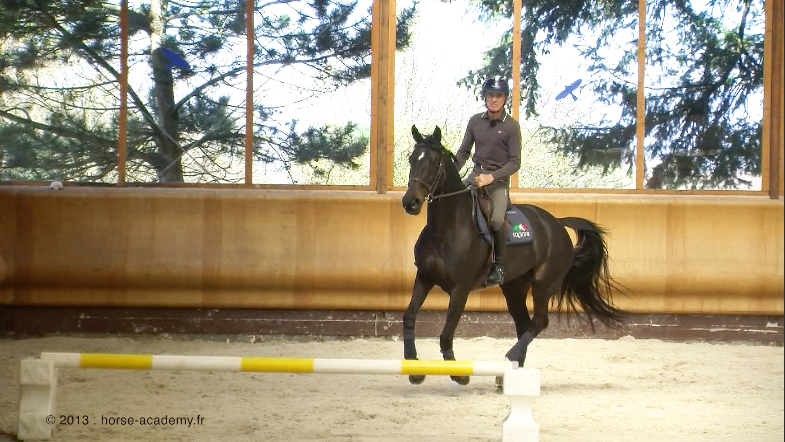Conditioning the horse on the flat and on jumps

Zeta de Hus just joined Michel Robert’s yard. The goal of this work session is to improve Zeta’s balance and control, without imposing excessive pressure. The idea is to engage her in the work, while dealing with her disposition. The diversity of exercises and the natural environment will help to achieve this goal.
Zeta de Hus just joined Michel Robert’s yard.
The goal of this work session is to improve Zeta’s balance and control, without imposing excessive pressure. The idea is to engage her in the work, while dealing with her disposition. The diversity of exercises and the natural environment will help to achieve this goal.
The session starts with a warm-up in a varied terrain: transitions, figure-eights, lead changes… Michel takes advantage of the slope of the ground to encourage the mare to find her balance. He’s also trying to place himself in the same conditions as on a course and consequently he works on his position: speeding up, slowing down, wide turns, tight turns….
At the beginning of the session, lead changes were not always successful. Michel doesn’t focus on that problem, and continues his work calmly. He knows that everything will get back to normal as soon as he has established correct communication between him and Zeta.
After the warm-up on the flat, he works on several lines of fences. Some cavalettis, some combinations and different kinds of fences, like a water jump and a log oxer. He’s mainly looking for a steady canter. To reach that goal, he’s using, among others, some rubber foam poles to set up the tempo of the canter strides between two fences. He varies the exercises often, still with the idea of not fixating on issues.
During this whole session, Michel adapts his position to cope with the challenge of each exercise, and with the mare’s attitude. A good point of reference for every rider wanting to work on his/her position and looking for references and practical advice in that matter. Towards the end of the session, Zeta is doing good lead changes, and the control in the lines of fences is more than satisfactory.






